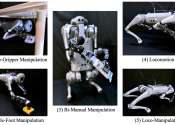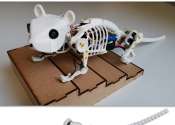Researchers take next step with cyborg beetles – controlling their gait
(Tech Xplore)—A small team of researchers at Nanyang Technological University in Singapore has taken the idea of controlling live insects using electronics a step further—by controlling its gait. In their paper published ...









